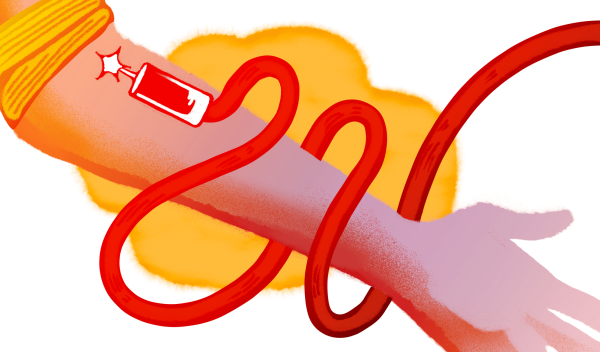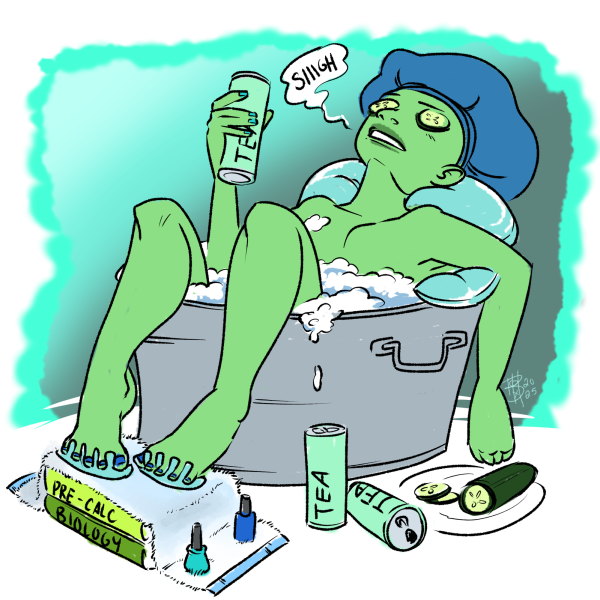- Beavers Digest
- Beavers Digest / Culture
- Beavers Digest / Culture / Community
- Beavers Digest / Culture / Expression
- Beavers Digest / Culture / People
- Beavers Digest / Experience
- Beavers Digest / Experience / Wellness
‘We still have much to learn:’ Local experts discuss medical marijuana
Duck (they/them) smoking outside in Corvallis Ore. on Nov 27. Although card holders for medicinal marijuana could get marijuana before 2015 for medical reasons such as pain, more people are beginning to purchase the substance unofficially.
Long before recreational cannabis was legalized in Oregon, medical marijuana was a commonly used method for managing pain and other ailments and could be purchased legally by patients who held medical marijuana cards.
The Oregon Medical Marijuana Act was created in 1998 after the passing of Oregon Ballot Measure 67. This allowed the medical use of marijuana in Oregon.
“What happened is that people who were part of the Oregon Medical Marijuana Program had a license, or card, to be able to purchase marijuana for medical purposes,” said Jane Ishmael, a professor of pharmacology in the College of Pharmacy at Oregon State University. She specializes in medicinal properties of cannabis. “This permit system was established in 1998 and essentially protected both patients and doctors.”
By implementing the act, Oregon became one of the first states to recognize that there were medicinal properties in cannabis. Medical marijuana is not a specific type of cannabis, it simply refers to cannabis used for medical purposes.
“The product range that is available to people can be wide-ranging,” Ishmael said. “People might be seeking something with a specific percentage of CBD or THC or they’re just seeking the medical properties of the whole plant itself.”
Since the legalization of the recreational use of marijuana in 2015 in Oregon, there are now two markets for marijuana: the medical market and the recreational market.
While medical marijuana dispensaries had already been open for nearly 20 years, offering a range of products to medical marijuana card holders, most have expanded and now sell recreationally as well.
Since the recreational market came on board, many people purchase the product recreationally while seeking medicinal benefits.
In Oregon, people who use marijuana for medical purposes have a vast array of options now. There now seem to be solutions to any ailment you can think of, whether it be a THC-, CBD- or hemp-based product. The official State of Oregon website provides a list of qualifying medical conditions for which Oregon-attending providers may recommend the use of medical marijuana. Part of this list includes conditions like cachexia, severe nausea, seizures, muscle spasm and pain.
“Severe pain is by far the most common reason people seek medical marijuana,” Ishmael said. “There’s good rationale and a logical reason for why the natural chemicals in marijuana might be useful for pain and that’s because we have a whole system called the endocannabinoid system within our bodies that acts to modulate pain signaling in a way that’s different from the other pain signaling pathways. Some of the natural chemicals from the [cannabis] plant work in the same places in the body to change our perception of pain.”
“The endocannabinoid system,” states a Harvard Health Publishing article, “is critical for almost every aspect of our moment-to-moment functioning and regulates and controls many of our most critical bodily functions.”
Endocannabinoids are molecules produced by our bodies to help control our bodies, such as hunger, alertness and temperature. Interestingly enough, endocannabinoids are structurally similar to cannabis molecules. When it comes to what a person might look for when trying to purchase marijuana for its medicinal effects, Ishmael said it’s based on patient preference.
“It’s a botanical product but the marijuana dispensary system is not regulated by the U.S. Food and Drug Administration,” Ishmael said. “There’s no one particular solution; these products are not tested or standardized in the way other medicines are tested and dispensed from a pharmacy. There is a range of products that dispensaries sell that they can direct you to.”
Adam Israel, manager of Green Room Dispensary, said CBD is most commonly used to help with pain for its anti-inflammatory properties.
If someone were to come in looking for pain relief, Israel said he would suggest cannabis products with higher CBD content.
“I will first ask if they want to be high or not,” Israel said. “Some people don’t want a psychoactive effect so that’s when I would recommend a product with the smallest amount of THC.”
Ishmael said there has been stigma around marijuana use in the past that has prevented people from seeking consultation. As marijuana is more accessible now, she said fewer people enroll in Oregon’s formal medical marijuana program. Instead, people tend to try it unofficially.
“Historically, medicinal plants have played a really important part in the development of medicines,” Ishmael said. “In that respect, cannabis is no exception, but we still have much to learn.”





